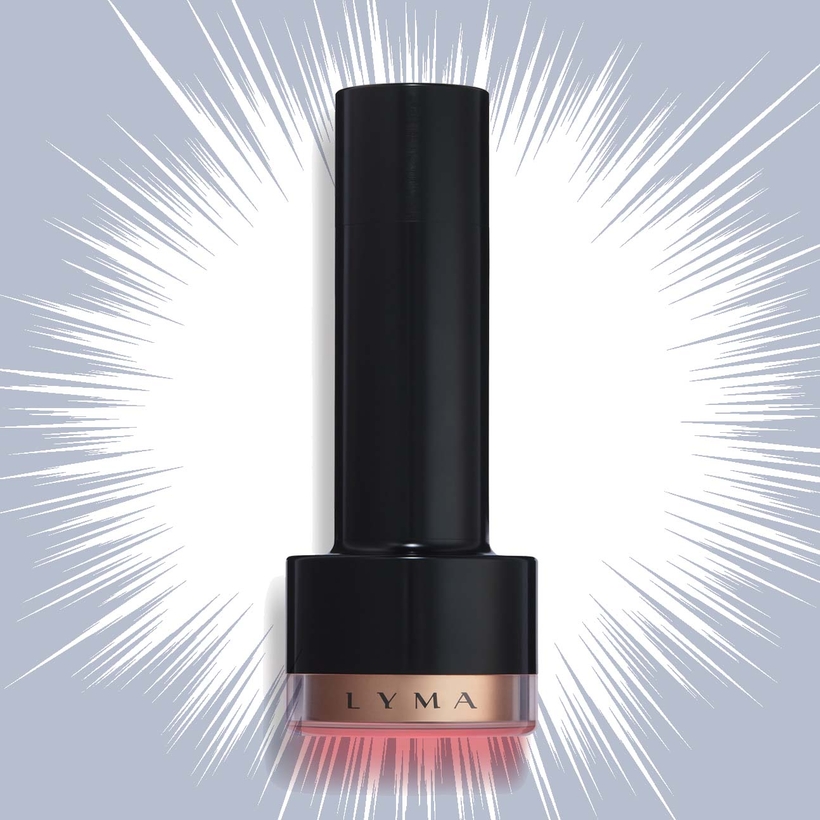The Lyma Laser Pro
A wrinkle-zapping laser that lives up to the last word in its name
The slightly grating adjective “pro” was originally used on tech products almost 50 years ago and meant what it said—that the device was designed for people who needed extra functions and durability for their work.
Thanks in no small part to Apple, “pro” has shifted semantically to indicate a better-made or generally fancier version of the product, just as “sport” for a car doesn’t mean it’s for driving only in the Daytona 500.
Given that this is a small point, if one that slightly irritates your columnist, I was curious when the hugely lauded and successful British beauty start-up Lyma recently introduced the Lyma Laser Pro at the notably professional price of $5,995.
Because the standard Lyma has, at less than half the cost, admirably fulfilled my partner’s facial-refurbishment needs these past three years, I assumed that the new, heavier laser, with its greatly expanded head and, accordingly, much faster treatment speed, was for salon use.
Lyma’s clinically validated anti-aging wands work by shining medical-grade, cold laser light into the lowest layer of the dermis, where it stimulates skin cells and collagen and makes the former repair or regenerate rather than give up the ghost and die, as they are prone to do from our early 20s onward.
There were two surprises, then, when the Lyma Laser Pro turned up for review. One is that its wider head isn’t as bright as you’d expect, given that the device is three times more powerful than the standard model. Lyma’s explanation for this is interesting. The red light you see from their lasers is just L.E.D.’s, to show you the machine is on. The effective light source used in both Lyma lasers is near-infrared light at a wavelength of 808 nanometers, which is invisible to the human eye. So the apparent dimness is just because the L.E.D.’s are more spread out.
The second surprise is that the new model is for regular users—who range from Martha Stewart and Hannah Waddingham to Sabrina Carpenter and Carey Mulligan—rather than for salons. Indeed, the Pro needs a four-hour recharge after around 30 minutes of use. So if you are thinking of setting up a cottage industry repairing your neighbors’ faces, be aware you may need more than one instrument.
I should explain that 30 minutes is more than anyone needs in one session, but my partner has gotten me Lyma Pro–ing, too. I tend to regard my wrinkles as desirable life patina, but I am prepared, as a service to AIR MAIL readers, to vanquish them over the recommended 12 weeks’ use. I do rather enjoy the feeling that something good is subtly happening down in my dermis as I’m watching TV. I also like pressing the sensuous, clicky, rubber on-off switch, which I now call the Benjamin Button. I will report back in the New Year on the status of my wrinkles.
I do have one design improvement for when Lyma makes the inevitable Pro X—or maybe Lyma Sport—version. The Pro flashes white six times every three minutes, signaling to users that it’s time to move on to the next patch of skin. This is not ideal ergonomically, as you often can’t see the flashing. I suggest they incorporate a haptic warning, which would vibrate gently when time’s up.
Bowers & Wilkins Px8 S2 Headphones

The best wireless headphones money can buy
I promise it’s just a coincidence that I’m reporting on two über-luxury British tech products in one column, but I couldn’t hold these new Bowers & Wilkins wireless headphones over for a month in good conscience.
The Px8 S2 is a complete rework of the Px7—itself a terrific pair of headphones that, incidentally, is quite the bargain now.
But the new version is really something. Even before you put them on, you are hit by the luscious new-car smell of the leather earpads. B&W has gone for real napa leather—sorry, vegan hi-fi fans—and both the waft of that and the feel of it on your ears are glorious.
The engineering quality, too, is just superb. The solid, die-cast aluminum arms and bodywork look sensational and are bound to be more robust than the previous model’s plastic.
As for how the new cans sound, they’re at the highest level you could get in consumer Bluetooth headphones. Yes, wired studio headphones would probably top them if you have extraordinarily good hearing. There’s one pair of yet-to-be released competitor headphones I have heard in prototype form—a remarkable story I will tell if it ever is launched—that possibly exceeds the B&W Px8 S2, but it will cost close to $1,300.
So if you want the best currently available, don’t hesitate to go for this.
The HOVERAir X1 ProMax Drone

A drone made with sport and filmmaking—not creeping—in mind
Drones, which I love, have a bit of an image problem these days. In fact, they have a lot of an image problem, as bearers of death on battlefields across the world.
When DJI perfected the easy-to-fly, stabilized drone back in 2013, I envisioned the major downside being that it would become the favorite toy of voyeurs. I don’t believe that’s happened to any significant extent, but the fact that the characteristic buzz of a drone has been the last thing thousands of people have heard is tragic.
Early on, DJI began calling their wonderful products, which account for two-thirds of drones, “flying cameras,” and then later emphasized this usage by effectively taking over the struggling, Swedish camera superbrand, Hasselblad.
HoverAir is another, even younger Chinese drone brand whose aircraft are wholly flying cameras, but, unlike DJI’s, would not be attractive to an aggressive user. HoverAir drones look like flying miniature birdcages and are particularly adept at following a moving user.
I have been trying one of their newest models, the X1 ProMax, and for filming a runner, cyclist, skier, boat, or even an animal traveling at up to 26 m.p.h., it is quite a magnificent machine. The 8K footage it produces is breathtakingly smooth and sharp.
The X1 ProMax is tiny enough to fit in a large pocket and light enough to be flown license-free in most countries. HoverAir also has a discount replacement-and-repair plan that is reassuring.
DJI may look slicker, but for any filmmaker or casual user, HoverAir is favored by more than a few drone users.
Britannica Revealed

The illustrious encyclopedia-maker is playing games, and it’s working
The Encyclopedia Britannica was once the epitome of scholarship for the non-scholar. Albert Einstein, Bertrand Russell, Marie Curie, Sigmund Freud, and dozens of Nobel- and Pulitzer-level figures contributed signed essays on their specialty.
Parents eager for their children to learn would pay the cost of a small car for a set of the 24 volumes. In libraries and schools, it sat beside The Oxford English Dictionary and Webster’s Unabridged Dictionary as a symbol of serious reference, despite quite blatant racism and sexism in many of its entries in the first half of the last century.
Time has not been kind to the Encyclopedia Britannica. Its 1993 CD-ROM release and the rise of the Web served to undercut the publication cruelly. It stopped printing in 2010, and you can now get an old Britannica on eBay for $50. You would be better advised to spend $75 a year on a subscription to the surprisingly good online version.
The Chicago-based company, which was founded in Edinburgh, has to rely on its wits to make a buck these days. Among the things it uses to drive traffic to its site are brain-stretching on-screen games, and a new one is so good that it could be an alternative to your five-minute morning tussle with Wordle.
Britannica Revealed shows you an encyclopedia entry with key words redacted. Hover your computer cursor a limited number of times over the blanks and it will fill them in one by one until you successfully guess the subject of the entry. Or you don’t. The game is neither too hard nor too easy and is oddly satisfying as a brief, desk-bound head workout. You learn to ignore the annoying ads.
Based in London and New York, AIR MAIL’s tech columnist, Jonathan Margolis, spent more than two decades as a technology writer at the Financial Times. He is also the author of A Brief History of Tomorrow, a book on the history of futurology


